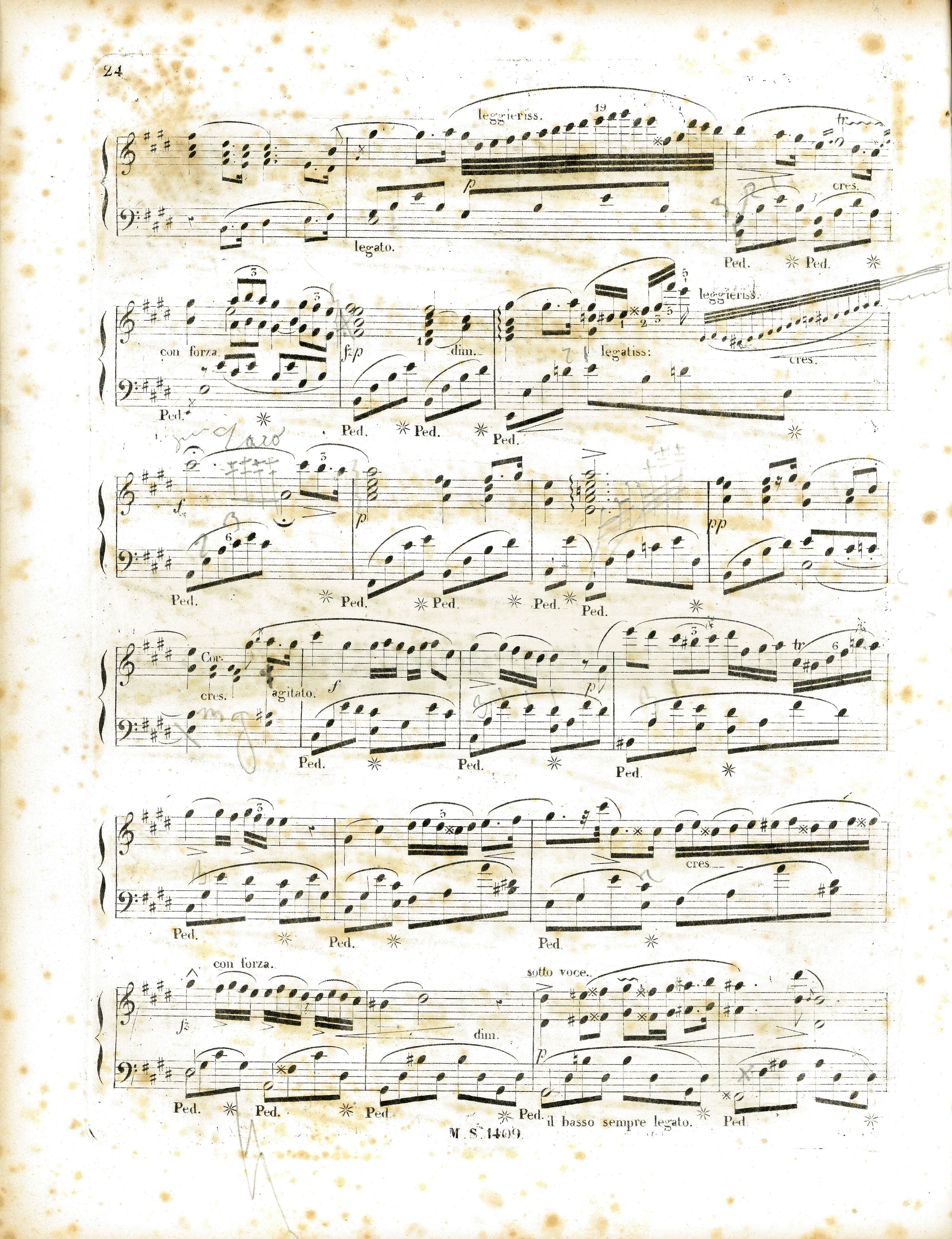




|
Slur (tenuto?) in FE |
|

|
No slur/tie in GE |
|

|
Tie to c |
|

|
Arpeggio written into FES, possible reading |
|

|
Repeated c |
The curved line present in FE (→EE) between the c 3 notes casts doubts on its origin and above all on its meaning:
3 notes casts doubts on its origin and above all on its meaning:
- the absence of the curved line in GE may indicate that it was added in FE only in the last phase of proofreading. However, it cannot be ruled out that the line was omitted in GE despite its presence in FE, e.g. due to an oversight;
-
the prescriptive interpretation of the line as a tie seems to be highly unlikely. If Chopin did not want to repeat c
 3, he simply did not have to write this note, since the rhythmic relationships in this bar are relaxed due to the suspension of the regular time course on the fermata;
3, he simply did not have to write this note, since the rhythmic relationships in this bar are relaxed due to the suspension of the regular time course on the fermata; -
repetition of c
 3 is supported by entries in FEH and FED in which the note is repeated a few times;
3 is supported by entries in FEH and FED in which the note is repeated a few times; - the notation of FE, in which the curved line is not placed horizontally and does not reach the very quaver, may suggest the use of a tenuto-slur (cf. the Etude in A minor, op. 25, no. 4, bar 30);
- a misunderstanding of the Chopinesque notation, either in the autograph or in the proofreading of FE, cannot be excluded.
In this situation, in order not to suggest an unjustified, according to us, sustention of c 3, we omit this curved line in the main text.
3, we omit this curved line in the main text.
The passage filling 5 quavers was added in FES on the margin next to bar 59. The handwriting does not belong to Chopin, which, in the case of FES, does not question the authenticity of this variant. However, the core problem is the issue of its placement, since the passage can be reasonably placed both in the 1st half of bar 59, being closest to the entry (as an A major passage), and after the arpeggiated chord in bar 61, which is in the same line of the text in FE (as an A minor passage). According to us, it is the latter that is more likely due to the variant added in this bar in FEH – the passage written therein, whose nature is similar to this one, proves that Chopin considered a figurational completion of the arpeggiated chord on the 2nd beat of the bar. Moreover, the combination of the passage with the adjacent elements of the text is particularly smooth in bar 61 – the hand begins the passage in the position of the preceding chord and ends it in the position of the subsequent one.
Naturally, in one performance the passage may be included in one place only, hence we consider the variant placed in bar 61 to be the text of FES.
The literal interpretation of the variant of FEH excludes a simultaneous application of the interpretation of the passage of FES discussed above. Another interpretation of the entry in FEH – see the note in the further part of this bar.
Compare the passage in the sources »
category imprint: Interpretations within context; Differences between sources
issues: Annotations in teaching copies, Annotations in FES, Authentic post-publication changes and variants, Tenuto slurs, Annotations in FEH
notation: Rhythm

